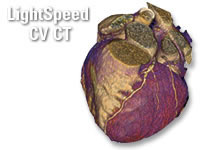 The NYT warns about doing too much. I don't think that is much of an issue for 99.99% of people.
The NYT warns about doing too much. I don't think that is much of an issue for 99.99% of people.
People who do Soul Cycle and similar programs, if done daily, might exceed those sprint warnings - if you believe them. Still, sprinting is like flying. It feels good.
As we have discussed before, HIIT is true Cardio exercise, meaning that it is designed to stress, not just use, the heart muscle. The goals are to improve or maintain heart function and to increase your odds of surviving your first unfortunate "cardic event" by developing collateral blood supply.
As we have also discussed here, it is sprints which have this effect. Exertions commonly grouped as "cardio" - like biking, swimming laps, jogging, rowing - are worth doing to maintain general endurance but do not get the heart rate to the 70-90% max that efficiently stresses the heart to the point of heart muscle development. Same idea as curls for the biceps.
Assuming you have a well-balanced fitness program (weights, calisthenics, and both types of cardio), two 20-minute sessions/wk of HIIT is good. Most calisthenics circuits include bits of HIIT too, such as speed rope, heavy ropes, or row sprints.
Obviously, all of this depends on age and level of fitness.
What is a typical 20-30-minute HIIT session? It's 30-60-sec. all-out sprints followed by 60-80 seconds of slow recovery. Rinse and repeat. The sprints are anaerobic.
The way I do it is to include sprints in one weights recovery day, which is like an hour of treadmill jogging, fast-walking, or elliptical, interspersing sprints in it. It keeps it interesting. On another day, I do 20-min of HIIT and then 30 minutes of weights or accesssory weights. You do not need to monitor your heart rate, because you know dqrn well when you are going all-out.
What is cardio? And what is the difference between cardio and high intensity interval training? And why is there a place for both? That piece is reasonable, but seems to assume that the only fitness exercise anybody does is "cardio." That is surely better than nothing but it is not a balanced fitness routine.


 The NYT
The NYT